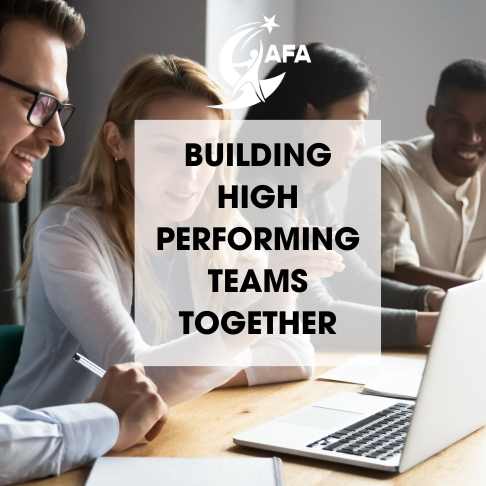
Burning Brightly, Sustainably
15/06/2022
Does anyone remember this line from the 80’s cult classic movie ‘Highlander’?
“I have something to say! It’s better to burn out than to fade away”
It was actually an adlib by an actor playing the villain, and it was really quoting musician Neil Young from his iconic 1979 hit ‘Hey Hey, My My’.
This is a strange start I’ll admit, but as usual, what I write often starts with a line from somewhere reverberating around my mind. Apart from exposing the fact that ‘Highlander’ occupies a small but unforgettable part of my life (I have watched it about 20 times), it was the specific reference to ‘burning out’ that is my focus here.
Work days have stretched. Burnout is on the rise.
A study conducted during the pandemic, looking at the experience of remote office workers, has shown a marked increase of 55% in chat and video interactions, with the biggest rise of 23% being outside of conventional office hours. While more flexible remote working can be a great benefit, it seems people are struggling to balance commitments, with many reporting that the working day has stretched to as much as 14 hours in length. It’s perhaps unsurprising to note that stress-related conditions such as burnout are also on the rise.
Here are some things we know, because of research studies involving fMRI and EEG scans, about burnout:
-
Burnout is provable. It’s caused by prolonged periods of incomplete stress cycles and is clinically defined as the point where your adrenal glands are unable to make cortisol needed to regulate stress
-
When stress cycles fail to complete and a new cycle starts before you recover to neutral, the part of your brain designed to trigger a fight-or-flight response (the amygdala) can increase in size so it’s easier to trigger another stress cycle
-
At the same time the prefrontal cortex part of your brain designed to interrupt and regulate stress can shrink so it becomes harder to stop yourself from overreacting. As a result each individual stress cycle takes longer to complete
Burnout is not just about being stressed out
It’s important to highlight that burnout isn’t a sign of weakness, and it isn’t simply being ‘stressed out’. Stress can in fact be a good thing and a certain amount is needed to ensure we live productive lives. With zero stress there is little incentive to grow, change, adapt, and learn. The symptoms of burnout are far more insidious, coming from an inability for the sufferer to experience stress in a normal healthy way:
-
Emotional exhaustion – you have nothing left to give and struggle to care about anything
-
Intense self-doubt – questioning your ability to be productive or useful
-
Cynicism and a sense of detachment from work commitments
“Burnout is what happens when you try to avoid being human for too long. Just because you take breaks, doesn’t mean you’re broken.” – Curtis Tyrone Jones
Of course I’m writing this because there is an answer. It’s an answer that has been repeatedly tested on subjects showing early signs of potential burnout, demonstrating reliable reductions in pre-symptoms such frequent anxiety, coping difficulties, uncontrollable mood swings. It’s also an unbelievably simple preventative cure – take regular breaks using the 3M Framework for avowing burnout:
 Here’s how that could look in real life:
Here’s how that could look in real life:
-
Macro breaks: Look at your calendar ahead of the start of every month. Find a day or a half-day where you can schedule space to get out and do something relatively stress free. Good examples of this are leisure activities such as hiking, cycling, gardening, a concert, golf, tennis(provided you’re not obsessed with winning. Involve family and friends only if it doesn’t mean you spend the day with people depending on you. Avoid your phone. Ideally turn it off. It’s also important you schedule this in your calendar. Otherwise it’s too easy to blow it off.
-
Meso breaks: Plan a regular recurring break of 2-4 hours into your weekly calendar. Two 1-2 hour breaks are just as effective if that’s more sustainable. Similar to macro level it could be cycling, walking, or gardening. Reading is another good option, but not anything that requires you to look at a screen or use a device unless it’s an electronic book that doesn’t connect to email or the internet. If you have weeks where the regular time doesn’t work, ensure you schedule a break somewhere else in your calendar for that week. These are only effective if you completely detach from both personal and professional demands. That means no phone, no TV, and no parental/family duties.
-
Micro breaks: Again, scheduling is your way of ensuring you take the time you need to care for yourself in the right way. Pick a number of breaks (3 is enough) that you want to spread throughout the day and set a reminder of some kind that gives you a 2-minute warning when that break is coming up. Use those minutes, to put whatever you’re doing to one side so that you can shift focus. Take 3-5 minutes away from all devices and other people. It’s vital that you don’t keep your phone switched on or near you during this break. There are many things you can do with that time which will recharge and protect you – here are a few suggestions:
-
Stretch your body gently and do some light yoga poses or take a brief walk around the yard
-
Hold someone you love in your mind and write down some things you appreciate about them and/or well wishes for them
-
Practice mindful breathing, eyes gently closed, just noticing your breath without needing to control it, focussed on it moving in and out of you
-
“Burnout is what happens when you try to avoid being human for too long.” – Michael GungorI feel like we started out a little doom and gloom, so I have even better news for you. Connected research studies suggest that you can get even more value, specific to avoiding burnout, from a regular mindfulness practice. This means that if you’ve read the suggestions above and you have a life that is so busy you cannot imagine fitting in regular macro and meso breaks, you could achieve the same results with the adoption of a regular daily mindfulness practice. As little as 12 minutes a day is enough and you can vary the routine to provide a range of other benefits also:
Increasing your ability to focus
Improved productivity
Higher quality of relationships
Better understanding of your physical body and your emotions
If that prospect interests you, reach out via Agility for All and I can help you start a regular practice that will give you all that and more. And sign up for our free resource library where we already have a collection of mindfulness resources and will be adding more quarterly.
Get Free Resources
About the Author:
KYLE RICHARDSON
My agile journey began 8-9 years ago as part of a search to align what I do for a living with the person I want to be. I see agile first as a philosophy for life, and the way that blends with both Zen and Stoic principles allows for a more holistic work life. For me what I do is an essential part of who I am so it all needs to be done with equal kindness and compassion, upheld by a strong desire to enable others along their chosen path. Working in the software industry allows me to geek out on tech and be passionate about improving communication networks and fostering strong customer-centric cultures (after all, we are all each other’s customers in one way or another).
Connect with us
Search

WELCOME TO THE AFA LEARNING PORTAL
We offer loads of free information here in the blog and also in our
resource library
AFA provides coaching, consulting, and training programs. In addition to specialized consulting, you have the option to choose from:
- group coaching programs
- masterclasses
- 1-week intensive offsites
Our programs are designed to help your organization to:
- Maximize Employee Engagement
- Foster Self-Organization
- Encourage Innovation
- Attain Higher Performance
- Be More Agile



